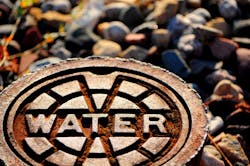U.K. government invests in water infrastructure research
CRANFIELD, U.K. — Nov. 27, 2015 — A U.K. university will expand its water treatment and infrastructure research facilities, supported by government funding of £8.2 million ($12.4 million), according to a press release.
Cranfield University said that the investment in its Water Science Institute would enhance its existing industrial-scale test facilities, providing extended access to on-site wastewater, water and stormwater treatment and conveyance systems, noted the release. The university will also establish several new facilities, including a pilot hall and infrastructure monitoring and control suite.
“The new facilities at Cranfield will enhance our research into the future of our most fundamental utility,” said Professor of Water Management Paul Jeffrey in the release. “Our expertise in water science is already well-established and these facilities will allow us to advance our understanding of water infrastructure further.”
Research at the enhanced facility will focus on treatment and distribution processes; future technologies such as low energy treatment and nutrient and energy recovery; condition monitoring and performance assessment including development of repair techniques which are less disruptive to supply; system-wide operation and control; and integrated data systems, reported the release.
Welcoming the new investment, Professor Sir Peter Gregson, vice-chancellor of Cranfield University, shared in the release that Cranfield has “an international reputation for pioneering research and education in water and sanitation.”
The investment is provided through the U.K. Collaboration for Research in Infrastructure & Cities, which involves 14 universities engaged in cutting-edge research into transport systems, energy systems, clean water supplies, waste management, flood defenses and the development of smart infrastructure, stated the release.
You can find the entire release here.
